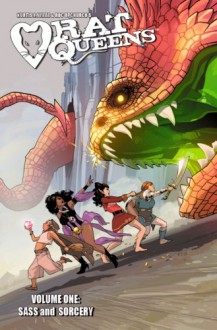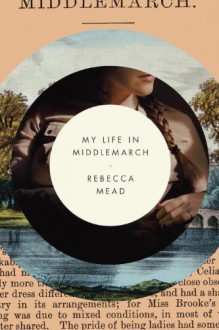Just this morning, I was listening to one of my favorite bookish podcasts, Dear Book Nerd with Rita Meade, and a listener posted an interesting question that I would like to explore. Not necessarily for this person specifically, or as any kind of correction to the excellent advice Rita and her guest Preeti provided, but just a jumping off point for something I’ve been thinking about a lot lately.
The listener (and I’m paraphrasing here) inquired as to the best ways to “move on” from reading YA to “adult” fiction. Her troubles included a lack of interest in the subject matter, as well as less engagement with the writing styles she was encountering in the adult fiction works she tried.
Stepping back from the question for a moment, there is a different quandary at the root of it for me: is there really any kind of “natural progression” for a reading life? Many think pieces have tackled this, some saying yes and that any “real” reader will move from children’s stories, to young adult, to adult and never look back, with the implicit assumption that the progression is from lesser to greater. I only have one word for that: nah.
On the other side, there is team Just Read, where what you read is less valid than IF you are reading at all. I am totally Team Just Read.
Every reader is different. Some will indeed start out with picture books and land smack-dab in the land of literary fiction and classics as an end game. Not all of these people are snobs, but some of them definitely are and will make their stance very clear. They have accepted that there is only one direction of progress, and if they do “regress” to YA or genre fiction, it is as a “guilty pleasure” and something to be embarrassed about. They also seem to be in denial about the sheer arbitrariness of labeling books in the first place.
Young adult, as a category, is more marketing strategy than helpful guideline (this is somewhat reductive, but hey, I know you don’t have all day). YA tends to be defined more by the ages of the characters than the themes of the actual book, and the lines can be so blurred that two libraries 50 miles apart will shelve the same title in YA and adult fiction respectively (I personally saw this happen with Philip Pullman’s His Dark Materials series, which is also mentioned in the podcast under similar circumstances). Other elements come into play as well, like accessibility of language, or how plot-heavy a story is, but these are not helpful, not even a little. There have been crossover successes, namely Harry Potter in this instance, that have been issued in both middle grade and adult versions- the only difference being the covers and the comfort they provide for the “guilty pleasure” adult readers who are embarrassed by what they like. If all that stands between the definition of adult and not adult is the physical appearance of a book, we’re even more lost than when we began. There is an assumption that young adult literature is “easier” from an ethical or psychological perspective, that it always buys into notions of happily ever after, or black-and-white conflict. A CERTAIN ARTICLE THAT SHALL REMAIN NAMELESS says just that. I can tell you, from my own reading experience (including titles mentioned in the very same article) that this is categorically false and is based on unfounded generalizations.
In a bit of an ironic twist, YA ends up being defined much like pornography: I can’t tell you what it is, but I know it when I see it. However, the borders dividing age-specific stories are so blurry as to be indecipherable without the publisher/library/bookseller making a final call in the presentation of the work. Saying that you only read YA or only read adult fiction starts to become not only unimportant, but inaccurate.
All of this long-winded analysis of terms is really just set up for me to say this: I don’t think the root of the problem is the difference between what YA has to offer versus adult, but rather it is a matter of determining what kinds of books and writers you like to read (genre, literary, contemporary, historical, classics, etc) and using those guidelines rather than the broader distinction between what is “adult” and what is not.
To be clear, I don’t think the individual who sent her question to Dear Book Nerd was necessarily thinking about all this weirdness and cultural subtext, but rather was trying to simply broaden her horizons. But whenever these categorical issues arise, I think it is important to look at the underlying assumptions that shape how we choose what we read and why. To want to read more adult fiction, not as a next step but merely as an enlargement of personal experience , is not about snobbery or proving that you are somehow more grown-up, but a desire for personal growth and THAT is a great thing to want. As long as your goal is to find something new and different rather than somehow “better,” there will always be a path open to do just that. Otherwise, you will continually set yourself up for disappointment.
Now that I’ve taken you down this weird little rabbit hole, I’ll try to turn this back around to where we started: how do you discover adult fiction that you will like, based on your positive experiences with YA.
Thanks to the very same murkiness that makes the division of the two so difficult, there is fairly easy passage between the two when you discover just what it is you are looking for. Rita and Preeti make a lot of great suggestions, so I’ll just add a few of my own and hope they help in some way.
The lucrative nature of YA in the current literary environment means a lot of writers are dipping their toes into both areas. If there is a YA author you really love, see if that same author has done something that has been marketed more to the adult sector. Steampunk was brought up specifically in the podcast as a genre that failed to hold the questioner’s attention as an adult option. I would say take a look at Gail Carriger’s YA Finishing School series, and then move directly to her adult series set in the same universe, The Parasol Protectorate. The writing style remains the same, but the plotting and themes shift to suit a different age demographic. Daniel Jose Older is another fantastic author who has written both YA and adult fiction, this time in the loosely defined “urban fantasy” genre, so dip into the YA (Shadowshaper) and then move to the adult (Salsa Nocturna, Half-Resurrection Blues) and see if there is a fit.
There are those of us who can read and enjoy The Hunger Games back-to-back with The Love Affairs of Nathanial P. or Beloved (I would consider myself this type), but that isn’t everyone. So if you find that the adult fiction you are dipping into is fundamentally different from what you would read in YA, you may need to readjust your assumptions and take smaller steps between genres. Often it isn’t the difference between YA and adult “levels” that causes the problem, but rather an apples vs. oranges juxtaposition of more specific elements. If I were to immediately go from The Perks of Being a Wallflower to Moby Dick, there would be way more factors involved in the success of that transition than whether one is more adult than the other.
The major piece of advice I would give anyone in their reading life, no matter the end goal, is simply this:
Read widely. Try everything you can until you find what you really love. When you find it, hold onto it.
Read voraciously. Cram as much of it into your life as you comfortably can. Books will always lead you to more books, and those connections are more valuable than any title or genre suggestion I could give you.
Read randomly. Grab books off the library shelf that simply have a nice cover, or great title, or hilarious blurb. Maybe you hate it, but at least you tried it. And if you love it, that is a WIN.
Most of all, just read. Read whatever you want, however you want, and don’t worry about if it fits anyone else’s definition of accomplishment.


 Log in with Facebook
Log in with Facebook 







